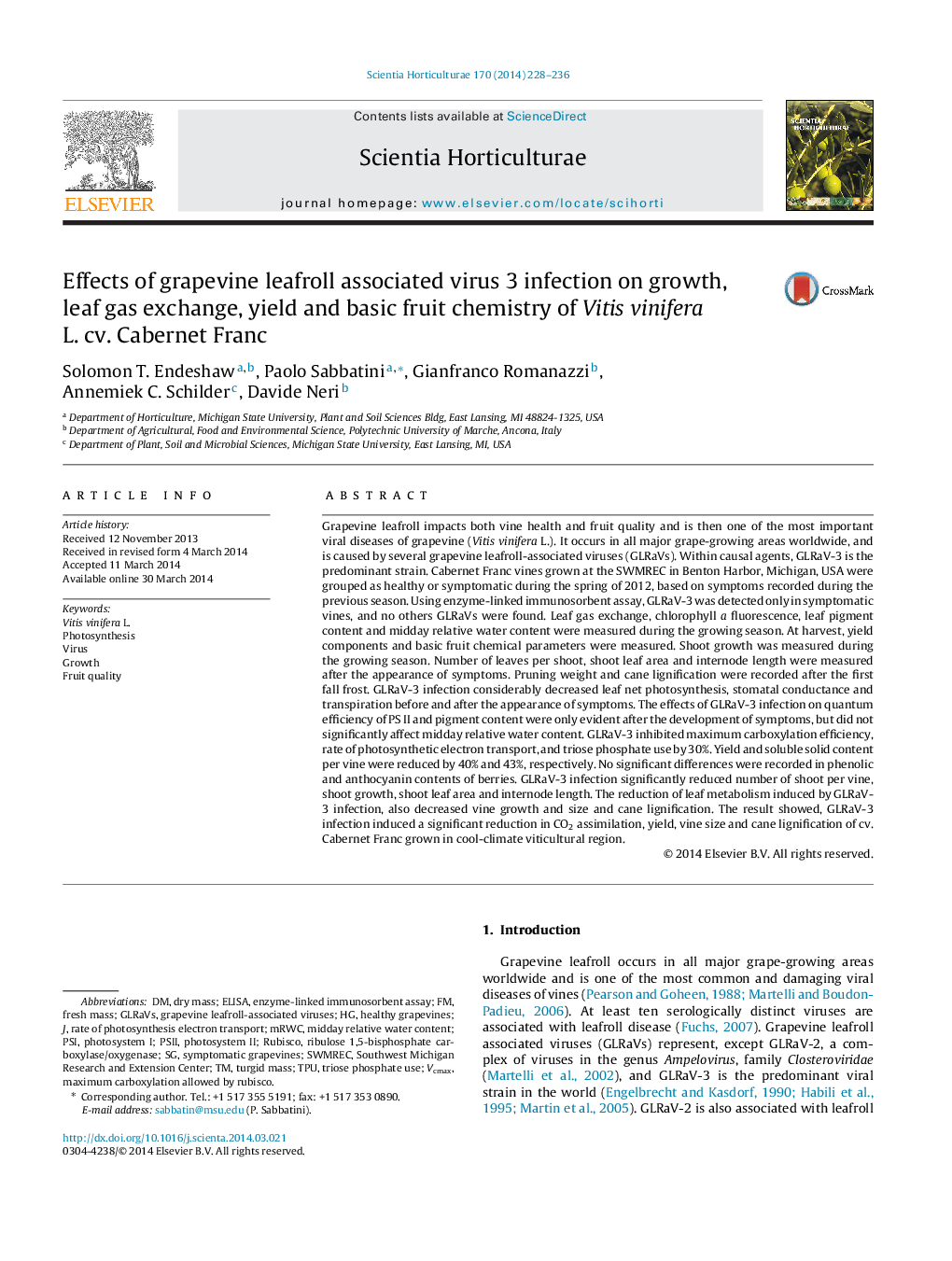| Article ID | Journal | Published Year | Pages | File Type |
|---|---|---|---|---|
| 6407228 | Scientia Horticulturae | 2014 | 9 Pages |
â¢GLRaV-3 significantly reduced leaf photosynthesis, stomatal conductance and transpiration before and after visual appearance of the symptom on the leaf.â¢GLRaV-3 infection reduced maximum carboxylation efficiency, rate of photosynthetic electron transport, and triose phosphate use.â¢GLRaV-3 decreased leaf pigment content and maximum quantum efficiency only after visual appearance of symptom on the leaf.â¢GLRaV-3 infection significantly reduced yield, fruit quality, vine size and cane lignification.
Grapevine leafroll impacts both vine health and fruit quality and is then one of the most important viral diseases of grapevine (Vitis vinifera L.). It occurs in all major grape-growing areas worldwide, and is caused by several grapevine leafroll-associated viruses (GLRaVs). Within causal agents, GLRaV-3 is the predominant strain. Cabernet Franc vines grown at the SWMREC in Benton Harbor, Michigan, USA were grouped as healthy or symptomatic during the spring of 2012, based on symptoms recorded during the previous season. Using enzyme-linked immunosorbent assay, GLRaV-3 was detected only in symptomatic vines, and no others GLRaVs were found. Leaf gas exchange, chlorophyll a fluorescence, leaf pigment content and midday relative water content were measured during the growing season. At harvest, yield components and basic fruit chemical parameters were measured. Shoot growth was measured during the growing season. Number of leaves per shoot, shoot leaf area and internode length were measured after the appearance of symptoms. Pruning weight and cane lignification were recorded after the first fall frost. GLRaV-3 infection considerably decreased leaf net photosynthesis, stomatal conductance and transpiration before and after the appearance of symptoms. The effects of GLRaV-3 infection on quantum efficiency of PS II and pigment content were only evident after the development of symptoms, but did not significantly affect midday relative water content. GLRaV-3 inhibited maximum carboxylation efficiency, rate of photosynthetic electron transport, and triose phosphate use by 30%. Yield and soluble solid content per vine were reduced by 40% and 43%, respectively. No significant differences were recorded in phenolic and anthocyanin contents of berries. GLRaV-3 infection significantly reduced number of shoot per vine, shoot growth, shoot leaf area and internode length. The reduction of leaf metabolism induced by GLRaV-3 infection, also decreased vine growth and size and cane lignification. The result showed, GLRaV-3 infection induced a significant reduction in CO2 assimilation, yield, vine size and cane lignification of cv. Cabernet Franc grown in cool-climate viticultural region.
